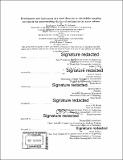| dc.contributor.advisor | Anna P.M. Michel. | en_US |
| dc.contributor.author | Johnson, Andrew S.(Andrew Stafford) | en_US |
| dc.contributor.other | Joint Program in Applied Ocean Science and Engineering. | en_US |
| dc.contributor.other | Massachusetts Institute of Technology. Department of Mechanical Engineering. | en_US |
| dc.contributor.other | Woods Hole Oceanographic Institution. | en_US |
| dc.date.accessioned | 2020-02-10T21:41:28Z | |
| dc.date.available | 2020-02-10T21:41:28Z | |
| dc.date.copyright | 2019 | en_US |
| dc.date.issued | 2019 | en_US |
| dc.identifier.uri | https://hdl.handle.net/1721.1/123751 | |
| dc.description | Thesis: S.M., Joint Program in Applied Ocean Science and Engineering (Massachusetts Institute of Technology, Department of Mechanical Engineering; and the Woods Hole Oceanographic Institution), 2019 | en_US |
| dc.description | Cataloged from PDF version of thesis. | en_US |
| dc.description | Includes bibliographical references (pages 125-131). | en_US |
| dc.description.abstract | Methane (CH₄) is a potent greenhouse gas that is often found in a solid, hydrate clathrate form in marine sediments along continental margins and will often escape from the seafloor and rise through the water column as bubbles. The estimated marine methane hydrate inventory is over 600 times greater than the current atmospheric concentration so the fate of this ebullitive methane flux is of great interest. Traditional methods of measuring this flux such as acoustic imaging, optical sensors, and modeling suffer from limited information regarding the bubbles' composition. Studies that attempt to constrain CH₄ bubble composition suffer from low spatiotemporal resolution and adaptability. The current study presents the design, development and deployment of a novel, in situ bubble sampling system, the Bubble Delivery System (BDS), to quantify gas chemical composition in the water column. The BDS was deployed at the Cascadia Margin -- a region well known for its active CH₄ bubble seeps -- where 95 samples were collected from McArthur Ridge, Hydrate Ridge, Heceta Deep and Heceta Shallow over the course of seven remotely operated vehicle dives. By combining this approach with the use of an underwater mass spectrometer, in situ analysis of these samples indicated that the bubbles contained between 84.6 to 100% CH₄ and exhibited a high level of variability both spatially and temporally. Bubbles emitted from Heceta Deep exhibited anomalously elevated levels of carbon dioxide compared to the other sites. | en_US |
| dc.description.statementofresponsibility | by Andrew S. Johnson | en_US |
| dc.format.extent | 131 pages | en_US |
| dc.language.iso | eng | en_US |
| dc.publisher | Massachusetts Institute of Technology | en_US |
| dc.rights | MIT theses are protected by copyright. They may be viewed, downloaded, or printed from this source but further reproduction or distribution in any format is prohibited without written permission. | en_US |
| dc.rights.uri | http://dspace.mit.edu/handle/1721.1/7582 | en_US |
| dc.subject | Joint Program in Applied Ocean Science and Engineering. | en_US |
| dc.subject | Mechanical Engineering. | en_US |
| dc.subject | Woods Hole Oceanographic Institution. | en_US |
| dc.title | Development and deployment of a novel deep-sea in situ bubble sampling instrument for understanding the fate of methane in the water column | en_US |
| dc.type | Thesis | en_US |
| dc.description.degree | S.M. | en_US |
| dc.contributor.department | Joint Program in Applied Ocean Science and Engineering | en_US |
| dc.contributor.department | Massachusetts Institute of Technology. Department of Mechanical Engineering | en_US |
| dc.contributor.department | Woods Hole Oceanographic Institution | en_US |
| dc.identifier.oclc | 1138947671 | en_US |
| dc.description.collection | S.M. Joint Program in Applied Ocean Science and Engineering (Massachusetts Institute of Technology, Department of Mechanical Engineering; and the Woods Hole Oceanographic Institution) | en_US |
| dspace.imported | 2020-02-10T21:41:26Z | en_US |
| mit.thesis.degree | Master | en_US |
| mit.thesis.department | MechE | en_US |
